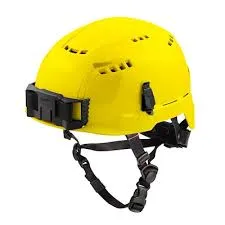different types of safety helmet manufacturers
Different Types of Safety Helmet Manufacturers
Safety helmets are essential in many industries, providing crucial protection against head injuries in workplaces such as construction sites, industrial environments, mining, and even during sporting activities. Various manufacturers specialize in producing these safety helmets, each offering a unique range of designs, materials, and features. This article explores the different types of safety helmet manufacturers, highlighting their contributions to worker safety and the industry as a whole.
1. Construction Safety Helmet Manufacturers
Construction safety helmets are among the most common types in the market. Manufacturers in this sector focus on creating products that comply with stringent safety standards such as ANSI Z89.1 in the United States or EN 397 in Europe. These helmets often include features like shock-absorbing liners, ventilation systems, and adjustable straps for a secure fit. Renowned companies like MSA Safety, Honeywell, and 3M lead the way in this space, offering a variety of helmets designed to protect against falling objects, electrical hazards, and impacts.
2. Industrial Safety Helmet Manufacturers
Industrial settings, such as factories and warehouses, require specialized safety helmets that cater to various hazards. Manufacturers in this sector often produce helmets that combine head protection with features like face shields, earmuffs, and communication devices. Companies like Pyramex Safety and Bullard excel in this segment, providing helmets that are particularly suited for environments where chemical splashes or high-temperature conditions may be present.
3. Mining Helmet Manufacturers
Mining helmets are designed to withstand extreme conditions and provide protection in environments with unique hazards, such as low visibility and the risk of falling debris. Manufacturers such as JSP and Schubert & Salzer strive to produce helmets that integrate safety lights and additional padding for comfort during long shifts underground. These helmets often come with advanced ventilation systems to keep miners cool and focused on their tasks.
different types of safety helmet manufacturers

4. Sporting and Recreational Helmet Manufacturers
While traditional safety helmets are focused on workplace safety, there are also specialized manufacturers who create helmets for sports and recreational activities. Companies like Bell Helmets and Giro produce helmets that protect against impacts during cycling, skateboarding, and other sports. These helmets prioritize lightweight materials and aerodynamics, appealing to athletes who value performance as much as safety. The designs are often aesthetically pleasing, making them popular choices among young people.
5. Firefighting Helmet Manufacturers
Firefighting helmets are uniquely designed to protect against the extreme heat and environmental hazards encountered when battling fires. Manufacturers such as Cairns and Bullard create helmets with advanced materials like thermoplastics, which are both heat-resistant and lightweight. These helmets often feature a full-face shield and a high-visibility design to ensure that firefighters are easily seen in smoke-filled environments.
6. Specialized Helmet Manufacturers
Aside from the mainstream categories, there are manufacturers that specialize in creating helmets for niche applications, such as rescue operations, utility work, and even military use. These helmets often incorporate specialized technology, such as communication systems and ballistic protection, tailored to the demands of their specific fields. Companies like Team Wendy and Ops-Core focus on providing helmets that ensure both safety and operational efficiency in high-risk situations.
Conclusion
In conclusion, the landscape of safety helmet manufacturers is diverse, with each sector addressing unique risks and requirements. From construction helmets that safeguard against falling objects to industrial helmets designed for chemical compliance, the innovation in this industry is vital for worker safety. As technology and materials continue to evolve, we can expect manufacturers to develop even more advanced helmet designs that further enhance protection and comfort. This commitment to safety not only helps prevent injuries and fatalities but also fosters a culture of safety across various industries.
-
Top HDPE Safety Helmets - Lightweight, Durable Head Protection
NewsAug.01,2025
-
Top AI Safety Clothing with GPT-4 Turbo | Smart Protection
NewsJul.31,2025
-
Face Shield Safety Helmet with GPT-4 Turbo AI Safety
NewsJul.31,2025
-
CE Working Clothing for Construction & Welding Safety
NewsJul.30,2025
-
Premium Safety Helmet with Visor for Construction & Industrial Use
NewsJul.29,2025
-
High-Quality CE Working Clothing for Safety and Construction
NewsJul.29,2025
